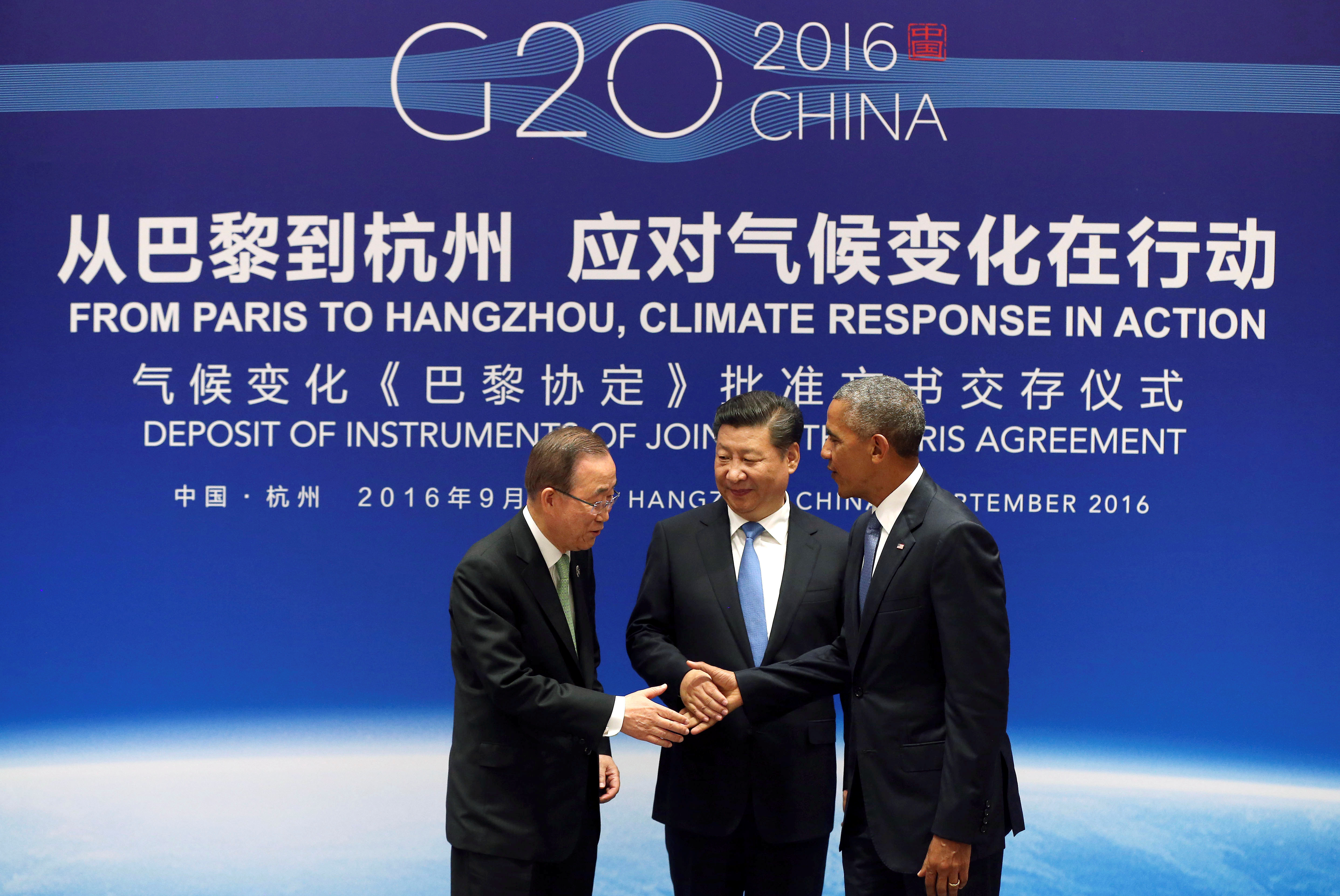

Warwick J. McKibbin Former expert - Economic Studies, Center on Regulation and Markets, Distinguished Professor of Economics & Public Policy - Crawford School of Public Policy, The Australian National University



The Paris Agreement, adopted by the Parties to the United Nations Framework Convention on Climate Change (UNFCCC) in 2015, has now been signed by 197 countries. It entered into force in 2016. The agreement established a process for moving the world toward stabilizing greenhouse gas (GHG) concentrations at a level that would avoid dangerous climate change. The centerpiece of the agreement is a set of pledges made by participating countries, known as Nationally Determined Contributions (NDCs), to near-term GHG targets they plan to achieve. In “Global Economic and Environmental Outcomes of the Paris Agreement” (PDF), Weifeng Liu, Warwick McKibbin, Adele Morris, and Peter J. Wilcoxen use a multi-region model of the world economy to analyze the economic and environmental outcomes that are likely to result from these NDCs. To construct the modeling scenario, the authors convert the disparate NDC formulations into estimated reductions in CO2 emissions relative to a baseline scenario with no new climate policies. They then solve for the tax rate path on CO2 in each region that achieves the NDC-consistent emissions reductions in the target year, 2030 for most regions.

December 6, 2018

They find that if all regions achieve their NDCs, the Paris Agreement significantly reduces CO2 emissions relative to baseline. Projected reductions in CO2 emissions growth rates across the regions in the model range from a low of one percent for OPEC to nearly six percent for Japan. Global CO2 emissions would be lower than baseline by 13 billion metric tons by 2030. However, the Paris policy scenario suggests that global CO2 emissions would not decline in absolute terms relative to 2015 levels, let alone follow a path consistent with a 2°C stabilization scenario.
Comparing projected 2030 CO2 tax rates to the same year’s percent emissions abatement relative to baseline, the authors find that declines in CO2 emissions do not necessarily correlate with the CO2 tax rate. For example, under Paris, Japan’s emissions decline the most of all regions, but its CO2 tax is the fourth lowest at about $US 16 per ton. India and the United States share a common goal for percent reduction of emissions relative to baseline, but India’s tax rises to about $US44 per ton in 2030, about 70 percent higher than the $US 26 tax in the United States in its target year of 2025. As with an earlier modeling study of the commitments in the Copenhagen Accord, the authors find the NDCs result in significant macroeconomic spillovers across the global economy, meaning that macroeconomic outcomes across countries depend not only on their own commitments but also on those of the rest of the world. For example, GDP falls most relative to baseline for OPEC and Russia, which rely heavily on fossil fuels as both a domestic energy source and as exports.
They also explore how outcomes could change if select countries unilaterally withdraw from the agreement and undertake no new climate policies. For example, in light of the Trump Administration’s announcement that the United States will withdraw from the Paris Agreement by 2020, we run the scenarios with and without participation by the United States and also run simulations with and without China, the world’s largest GHG emitter, and Australia, an important fossil fuel exporter. The authors find that non-participation leads to economic gains (in terms of GDP) for these countries relative to participating, illustrating the challenge of forging an international agreement with participation by all major emitters and fossil fuel producers. However, the authors also find that accounting for the monetized climate and domestic co-benefits of emissions reductions, those countries, including Australia, are worse off if they unilaterally withdraw from the Paris Agreement than if they participate. Thus, although they find there are gross costs to participating, doing so generates net benefits for the individual country participants. Read the full paper here.